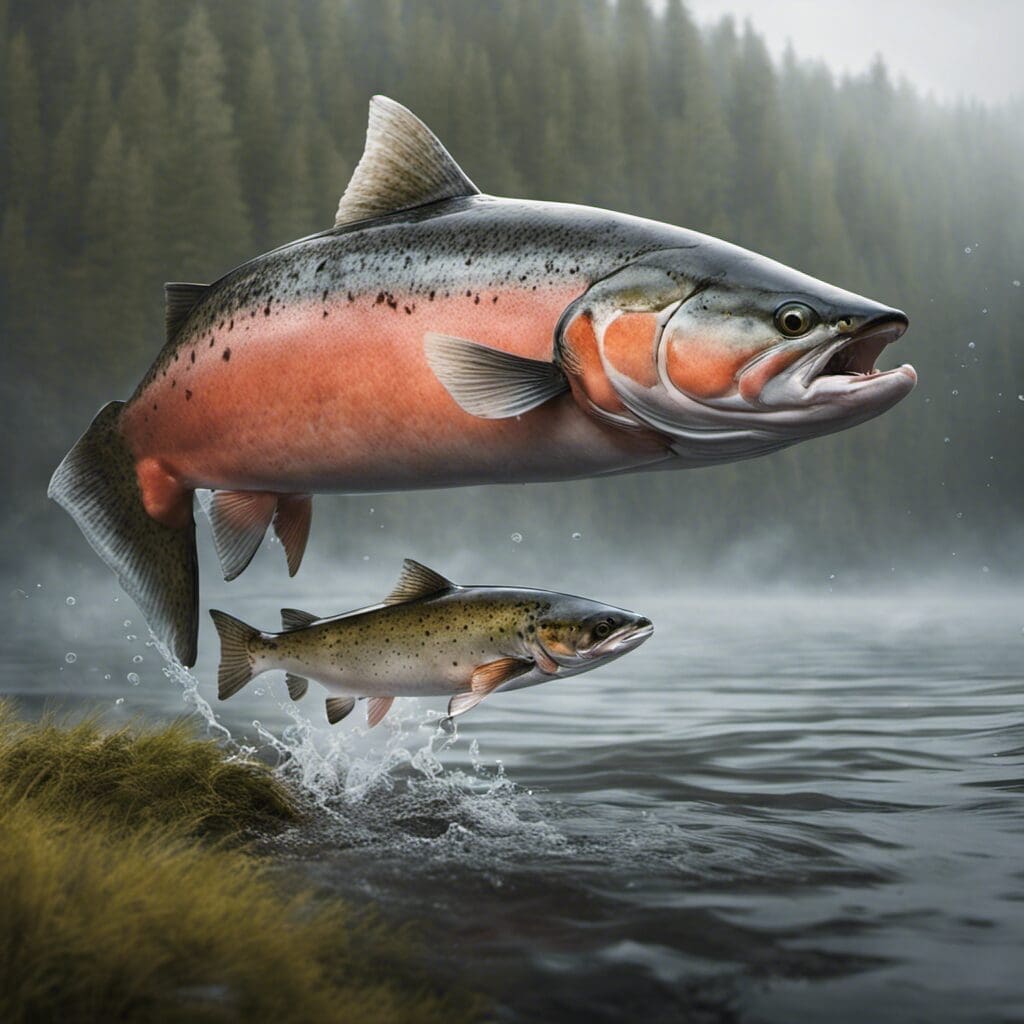Introduction
Salmon, scientifically known as Salmo Salar, belongs to the Salmonidae family. Often associated with clear, freshwater bodies, these fascinating creatures play a vital role in both the ecosystem and the economy.
Conservation Status
With several species listed on the International Union for Conservation of Nature’s Red List, most notably the Atlantic salmon, the conservation status of salmon in different regions diverges significantly. Conservation efforts are persistent – especially in areas where the salmon population is at risk – and include initiatives like habitat restoration, a stricter regulation against overfishing, and breeding programs.
Statistics
Salmon’s physical characteristics, including length, weight, and lifespan, vary greatly based on the species.
| Average | Range | |
|---|---|---|
| Length | 70-76cm | 51-132 cm |
| Weight | 4-5 kg | 2-25 kg |
Their average lifespan is 3-8 years, depending on the species and environmental factors.
Distribution
Salmon are found in both the Atlantic and Pacific Oceans, and freshwater bodies of countries including Canada, Norway, Russia, and United States. They’re renowned for their remarkable migration patterns, which can span thousands of miles, leading them from oceanic habitats to freshwater spawning grounds.
Habitats
Salmon are a temperature-adapting species found in both salt and freshwater environments throughout their lifecycle. Generally, they thrive in temperature ranges between 10 to 15°C.
When and Where to See
Their migration for breeding — famously known as “runs” — occurs between early summer and early winter. Dawn or dusk is the best time to spot them as they usually feed around these hours.
Best Fishing Locations
If you’re looking to try your hand at salmon fishing, here are 10 great locations:
- Kenai River, Alaska
- River Tweed, Scotland
- Fraser River, Canada
- River Alta, Norway
- Columbian River, Washington
- Jondal River, Norway
- Umba River, Russia
- Rio Grande, Tierra Del Fuego, Argentina
- Kola Peninsula, Russia
- Lake Michigan, United States
But remember, always check local fishing regulations before you set out on your fishing excursion.
How to Catch
Popular choices for bait and lures include flies, spoons, and spinners. Techniques like trolling and fly-fishing are commonly employed, with morning and evening often being the most successful times.
Identification Guide
Identifying salmon involves considering size, color (which changes during migrations), and body shape. Typically, salmon have a streamlined shape with a round body that narrows towards the tail. They’re recognized by their silver scale color mixed with varying hues of blue, green, and black.
Culinary
A staple in many diets, salmon is praised for its taste and nutritional value. It’s high in Omega-3 fatty acids and vitamin D, and can be prepared in a variety of ways – from grilling and pan-frying to smoking and curing. Signature recipes include teriyaki salmon, smoked salmon bagels, and salmon en papillote.
Additional Information
Salmon feed on a variety of organisms, including herring, shrimp, and squid. They’re preyed upon by predators such as bears, eagles, otters, and humans. Their historical significance extends back thousands of years, featuring in many indigenous traditions, myths, and folk beliefs.
References and Further Reading
For further understanding, consult reliable sources like the National Ocean and Atmospheric Administration’s Fisheries page, the World Wildlife Fund’s Salmon page, and in-depth books such as “The Behavior and Ecology of Pacific Salmon and Trout” by Thomas Quinn

